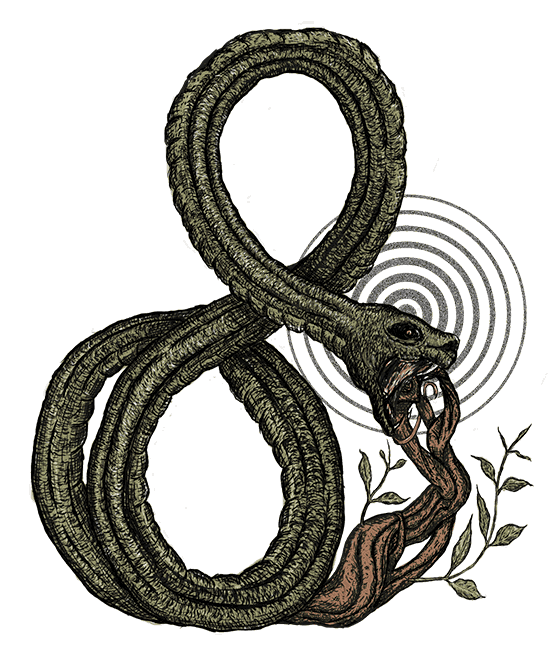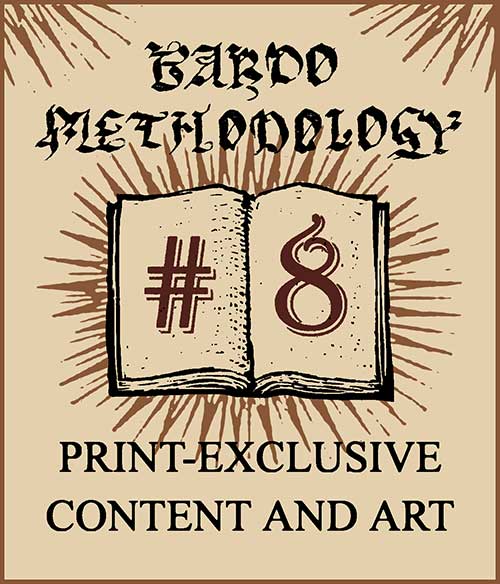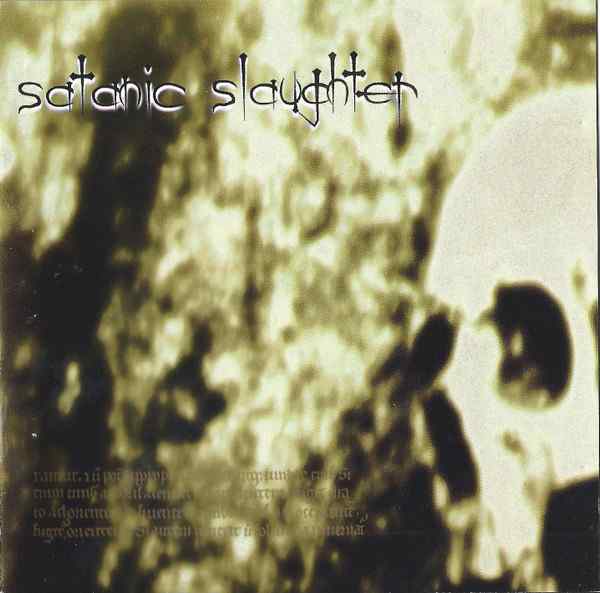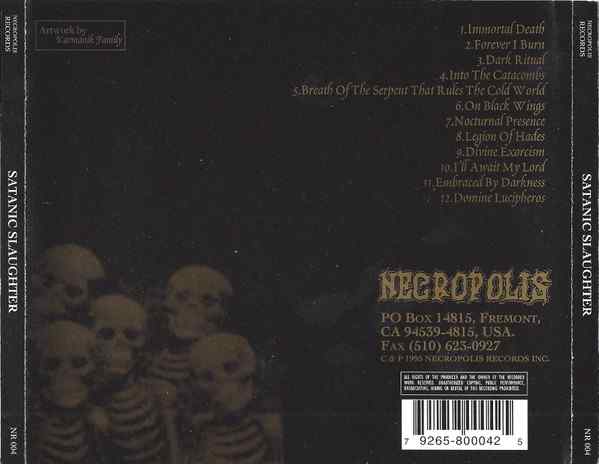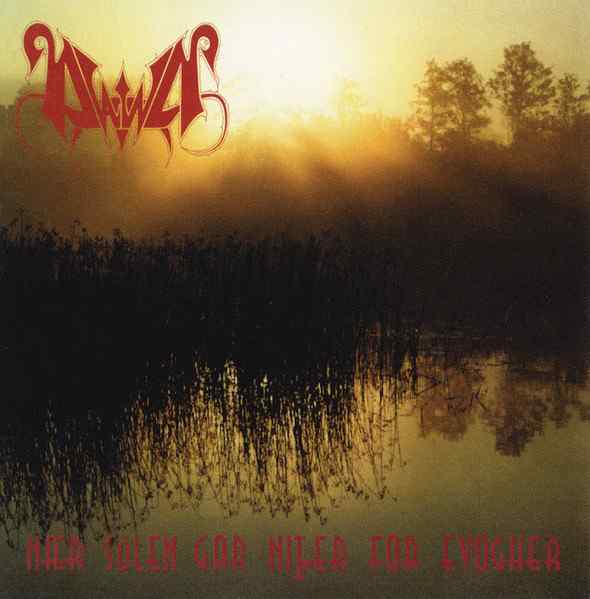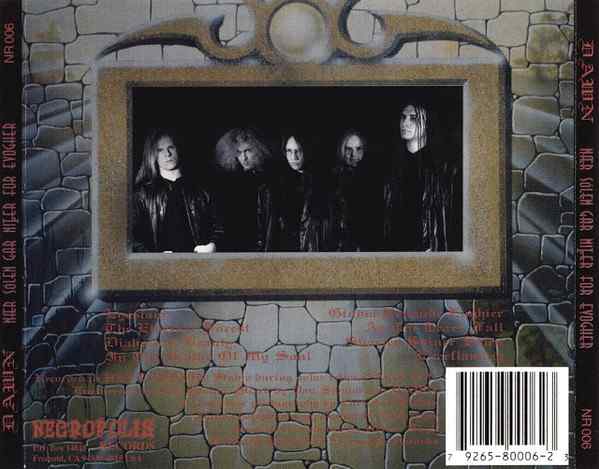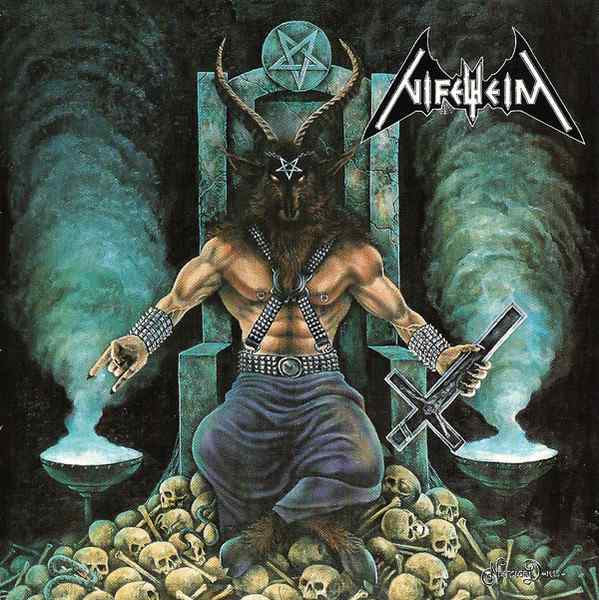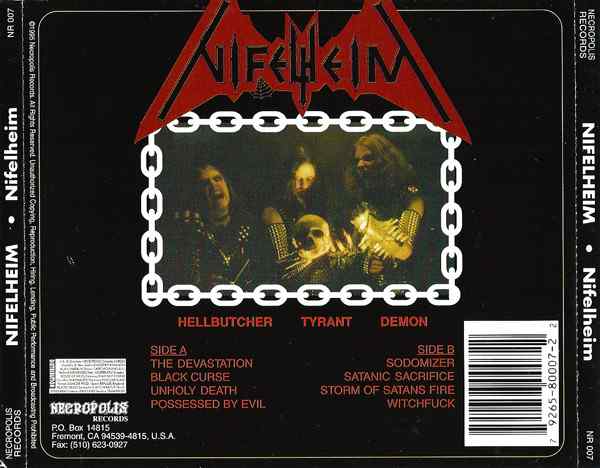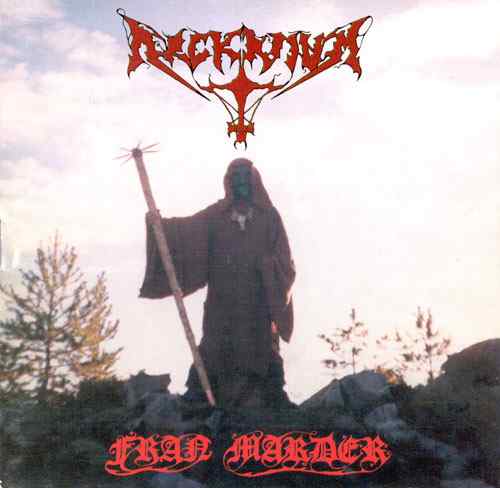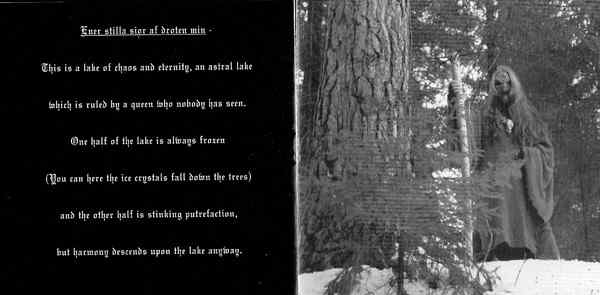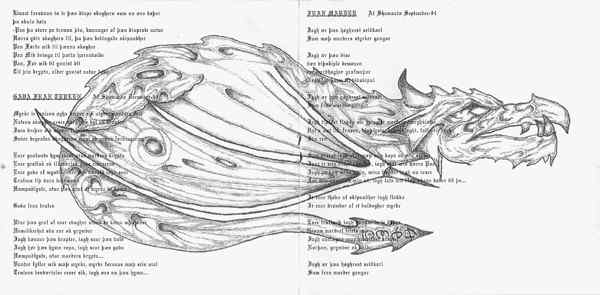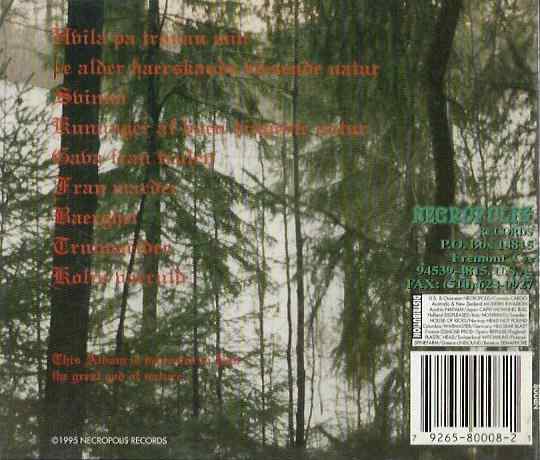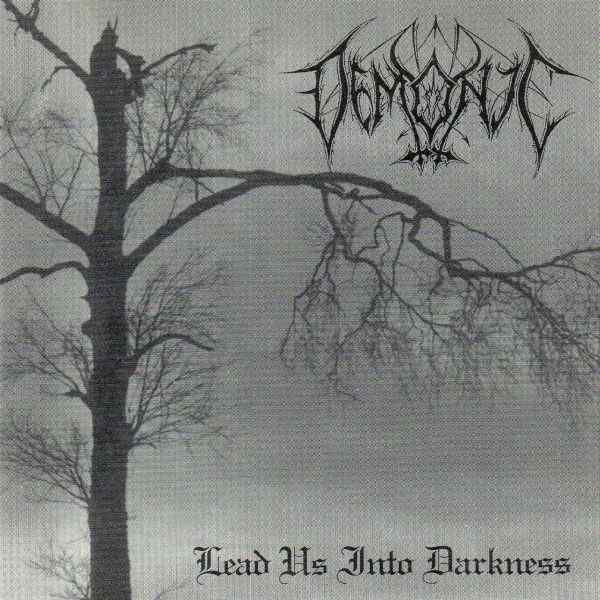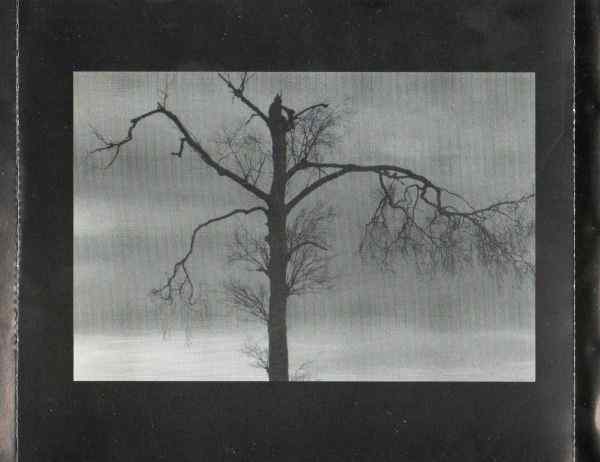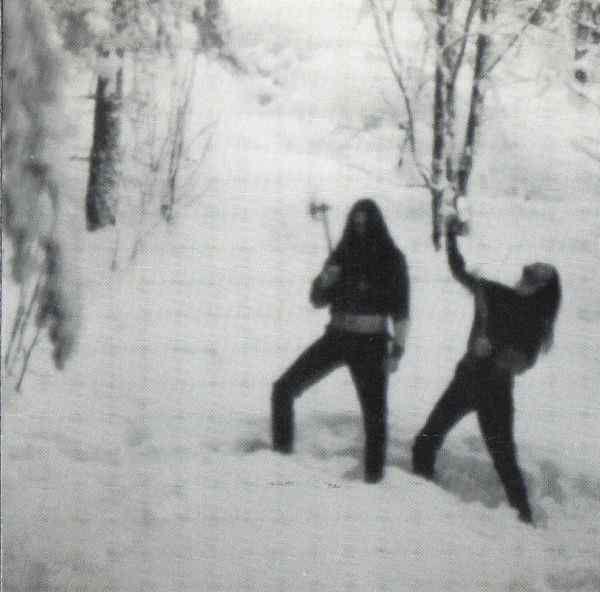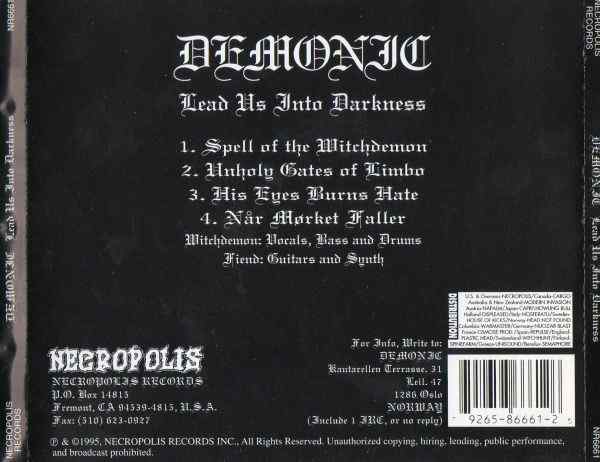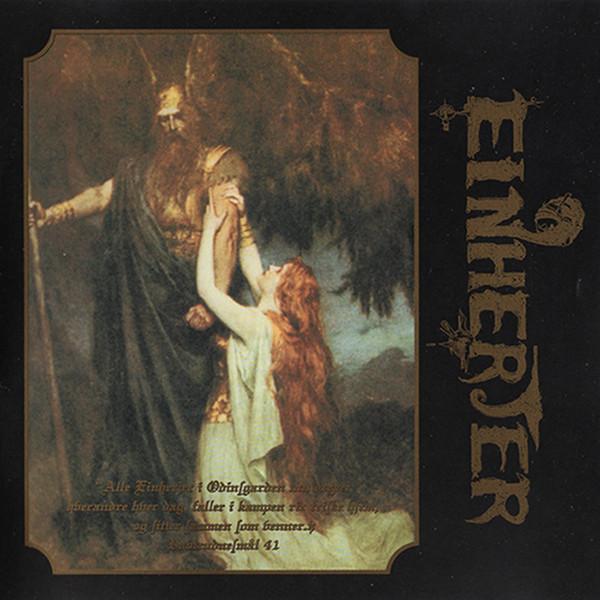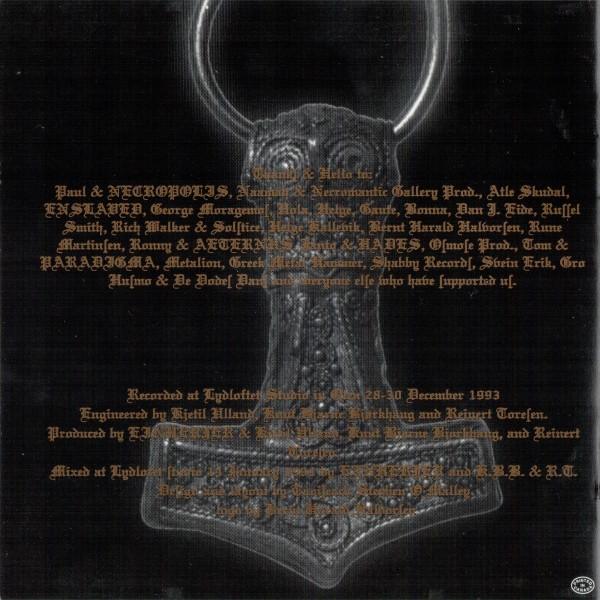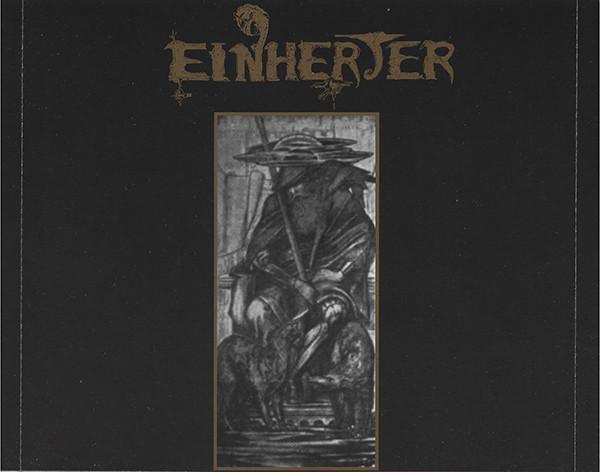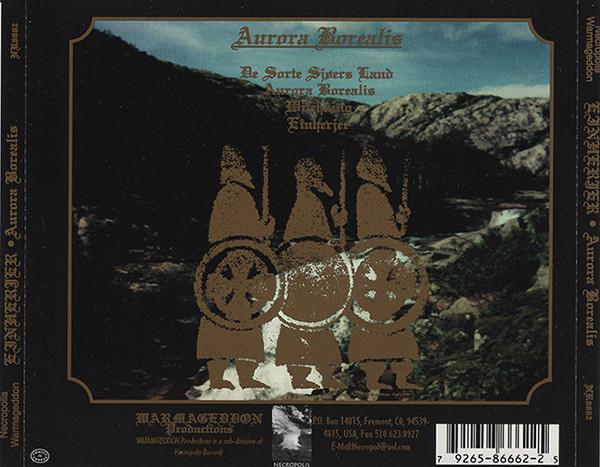Necropolis Records III
2025-10-15
by Niklas Göransson
In 1995, Necropolis entered a new phase – a reign of extremes where Nifelheim burned, Dawn shimmered, and Arckanum chanted troll-tongued hymns from the woodland depths. The empire of exile had found its northern voice.
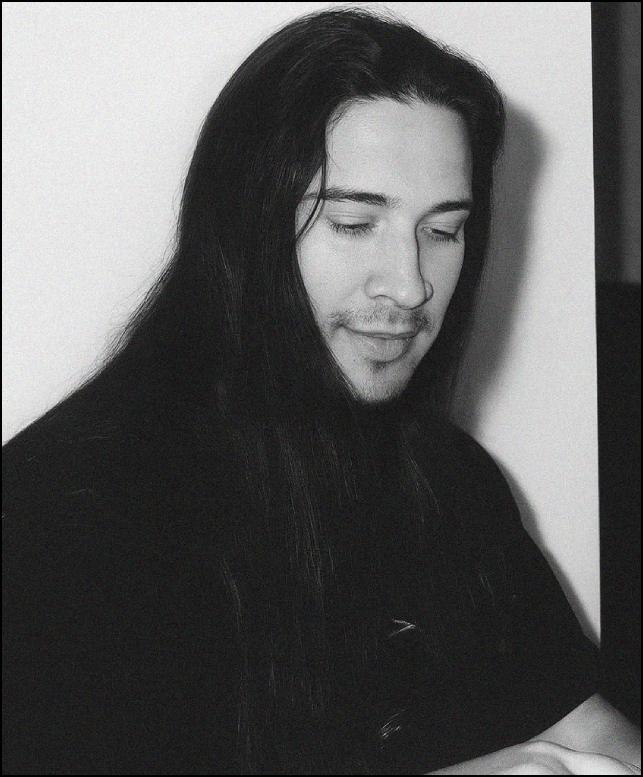
PAUL TYPHON: Jensen called me out of the blue one day after receiving my letter. We started talking and immediately bonded over common interests – for instance, his favourite album is “Darkness Descends” (DARK ANGEL), which has always been one of my core influences.
At some point in late 1991, while working on his fanzine, Paul sent interview questions to Patrik Jensen of Swedish death metal band SEANCE – then still a demo act.
PAUL: International phone calls were expensive, but he and I began calling each other regularly. The following year, Jensen and his friend came to visit me in the States. They stayed for a few weeks – went to baseball games, attended shows, and just hung out with me and Shiva.
In the summer of 1992, around the time Jensen visited California, SEANCE released their debut album, “Fornever Laid to Rest”, through Black Mark Production.
Later that year, Paul – with help from Shiva – launched Necropolis Records and signed Finnish death metal band DEMILICH. A few months later, in January 1993, Jensen saw them perform in Sweden.
PAUL: Afterwards, he told me he’d never seen young kids do anything like that – not even looking at the fretboard while playing those crazy riffs. This, in turn, gave me confidence in signing them, because I consider Jensen one of the greatest songwriters in metal.
Would you have been interested in SEANCE?
PAUL: I’ve always thought “Fornever Laid to Rest” is underrated, but SEANCE was still signed to Black Mark. During his visit, Shiva and I were listening to lots of black metal; Jensen goes, ‘Pff, I can write better than this!’ I just threw it right back at him: ‘Alright, then do it.’ That’s when he suggested resurrecting SATANIC SLAUGHTER.
After a brief stint as EVIL CUNT, Swedish proto-black/death band SATANIC SLAUGHTER formed in 1985. Three years later, they released the “One Night in Hell” demo – featuring future SEANCE members Mique Flesh and Toxine – only to split the following year when founder Ztephan Dark was incarcerated for assault.
PAUL: SATANIC SLAUGHTER had been a training ground for so many musicians from the Östergötland province; everyone knew their history. Jensen and I wanted some scene credibility – real street recognition – so we tracked down Ztephan and said, ‘Let’s finally release your debut album, the one that never happened.’
The band regrouped under a line-up of Ztephan Dark, Patrik Jensen, Mique Flesh, Toxine, and SEANCE guitarist Richard Corpse. Toward the end of 1994, they played a reunion show in their hometown of Linköping and recorded SATANIC SLAUGHTER’s self-titled debut at Dan Swanö’s Unisound – with Jensen as co-producer.
PAUL: Previously, I’d send money to the bands, but this time I dealt with Dan directly; we were old pen-pals, and he gave an EDGE OF SANITY interview for Necropolis #2. Even now, it makes me laugh – signing a band halfway across the world, putting them in a studio, and just hoping for the best sounds insane.
And how did it match expectations?
PAUL: The strength of their material and performances was incredible, but one regret we share is the production – Jensen went for more of a black metal approach, whereas those songs would’ve benefited from a heavier top and bottom end. Still, the riffs are killer. Did you like it?
I’ve never heard it. SATANIC SLAUGHTER appeared in Swedish ‘zines around then and made it clear their black metal association ended with the music, which meant instant dismissal.
PAUL: <laughs> Yeah. For whatever reason, there was a stigma around them. At that point, you couldn’t just play black metal – you had to live it. People were constantly on their case, and I’d say, ‘Ztephan started SATANIC SLAUGHTER when you were still in diapers, so give the man some credit.’
PAUL: Jensen was really good at connecting people – and going forward, our friendship became a huge part of Necropolis. For instance, he introduced me to another band from Linköping: DAWN, though I don’t recall if I contacted Fredrik or their vocalist, Henke, first.
Formed in 1990, DAWN went on to release two death metal-leaning tapes. Heavily influenced by EUCHARIST’s 1992 “Demo 1”, their promo from the following year introduced moody passages, more melody, and higher vocals.
PAUL: Henke is a formidable singer across all ranges – even in his grindcore bands – but I thought the promo vocals sounded more atmospheric and better suited for their music. When DAWN were in the studio, I actually asked him, ‘Are you keeping that higher style?’ He said yes.
After signing with Necropolis, DAWN entered Unisound to record their debut full-length, “Nær sólen gar niþer for evogher”. Marketed as ‘dark atmospheric forest death/black metal’, it came out in January 1995 – the same month as SATANIC SLAUGHTER’s album.
PAUL: Man, going from ARCHGOAT, BEHERIT, and THE BLACK to something like DAWN – probably our most polished release from the early days – sure brought out a lot of opinions. People were arguing about who was ‘true black metal’. ‘Why are you signing that band?’
Hard to imagine now – but in the mid-1990s, these distinctions were taken with grave solemnity and could essentially make or break a band’s reception.
PAUL: In hindsight, I suppose DAWN’s debut is the kind of release distributors – at least the ones I’d tried approaching – expect to get. But I couldn’t think like that. My stubbornness against popular opinion became a core part of how I ran the label. I signed whatever spoke to me, ignoring debates about who was burning churches or not.
“Nær sólen gar niþer for evogher” was the first Necropolis title licensed for Europe, by Dutch label Displeased Records.
PAUL: Displeased didn’t have the funds to press a European edition, so I just sent them a giant batch of CDs from the States <laughs>. Once again, not the smartest business decision; I was still rather green as a businessman, but we got more sophisticated over time.
PAUL: Necropolis Records became a very community-based label – I drove all decisions but always listened to the advice of my Swedish contacts. Other respected artists vouching for a band was the ultimate endorsement: ‘I know these guys; you should work with them.’
In 1993, Necropolis Records signed THE BLACK – a black metal band featuring DISSECTION frontman Jon Nödtveidt, a longtime contact of Paul. Their debut album, “The Priest of Satan,” was released the following year. Around the same time, Nödtveidt linked Paul with fellow Swedes, Hellbutcher and Tyrant of NIFELHEIM.
PAUL: Totally unique individuals – how else can you put it? Completely one of a kind, doing their own thing. The stories about them, hanging out with The Shit Man and all that, were pretty wild. Shiva and I loved “Unholy Death”; very deliberate, well-executed black metal malice.
NIFELHEIM’s “Unholy Death” demo, recorded in May 1993, was strongly influenced by Swedish veterans like BATHORY and TREBLINKA, as well as the old Brazilian scene.
PAUL: Getting that tape with its plain black xeroxed cover was incredible – it felt like a return to the old days. NIFELHEIM seemed to be the only band fully embracing that SARCÓFAGO aesthetic – the primitive sound, the look, the attitude. They were also one of the few who asked for the ARCHGOAT EP.
In December 1994, NIFELHEIM recorded their self-titled debut album at Studio Fredman in Gothenburg, Sweden.
PAUL: As I recall, Fredman wasn’t thrilled about the state of the studio afterwards – probably why they couldn’t go back – but the sound came out killer: slickly produced yet still primal and intense, all guns blazing. The cover art was one of Necrolord’s best in years, just stunning.
A founding member of GROTESQUE and later active in LIERS IN WAIT, Kristian ‘Necrolord’ Wåhlin had become renowned for his hand-painted album covers used by acts like DISSECTION, EMPEROR, TIAMAT, MERCILESS, and THERION.
PAUL: Our seventh release and a pivotal moment for the label. Brilliant music, and it felt refreshing to work with guys who wanted nothing more than to channel that pure metal feeling. NIFELHEIM lived the lifestyle to the bone – it was like a throwback to VENOM, but dead serious.
How was their debut received when it came out?
PAUL: NIFELHEIM were a bit of an acquired taste, so we had to push for interviews and get people talking about the record. I’m not sure everyone fully understood it – reviewers always tried to pin down what old band a new act reminded them of. Necropolis didn’t have proper distribution yet either.
With THE BLACK, MARDUK, DAWN, and NIFELHEIM in the catalogue, Necropolis already had one of the strongest opening runs for Swedish black metal – second only to No Fashion. And then came ARCKANUM.
Founded in 1992, the trio released a demo and two rehearsal tapes before becoming the solo project of multi-instrumentalist and former GROTESQUE drummer Shamaatae.
PAUL: By then, I was writing to Andreas – the other DAWN guitarist – and he made the introduction. That became a theme for Necropolis: musicians on our roster recommending other bands. Jensen connected us to DAWN, and they followed suit with ARCKANUM.
When Paul and Shamaatae got acquainted, ARCKANUM had just released the ‘94 demo tape “Trulen”.
PAUL: I just loved the eerie, echoey sound – fully underground, with a perfect blend of folkloric atmosphere and melodic riffs. His music felt like a spell, raw and feral, as if recorded in a cave. That’s what you want from art: to be transported into the creator’s vision.
Shamaatae signed with Necropolis and then entered Abyss Studio in February 1995. ARCKANUM’s debut album, “Fran marder”, was released six months later.
PAUL: The aggression and atmosphere captured the spirit of Necropolis better than most. Here’s an amazing musician who played everything himself and even drew his own artwork. You had the troll mask, lyrics about folklore and nature mysticism – all contributing to that unique forest-ritual quality.
I’m not sure how to explain it, but for a Swede who grew up with John Bauer art, the music really does have a trollish feel – greatly enhanced by Shamaatae’s aesthetic sense. Based on my recollections from the contemporary fanzine circuit, non-Scandinavians weren’t always as receptive.
PAUL: Many were puzzled by “Fran marder” and saw it as an ideological departure from what Necropolis represented. For me, it made perfect sense – NIFELHEIM and ARCKANUM side by side felt natural. Looking back, people now understand Shamaatae’s chaos gnosticism and can see he was truer than most of his critics.
The final Necropolis release of 1995 was DEMONIC’s “Lead Us into Darkness” – a reissue of their ‘94 demo with one bonus track.
Given Paul’s close ties to Euronymous and Deathlike Silence Productions, it’s a little ironic that the label’s first Norwegian release – recorded in Grieghallen, no less – was a rather tepid affair. I’d honestly forgotten the band even existed.
PAUL: You raise a fair point. DEMONIC’s members weren’t exactly pure black metal; they simply wrote good songs. By that stage, most Norwegian bands had already been signed. I was in talks with DIMMU BORGIR, SATYRICON, and others I’d hoped to bring aboard, but it never materialised.
How did “Lead Us into Darkness” perform compared to your Swedish titles?
PAUL: Well, it was essentially a demo pressed onto CD – a mini-CD at that – so DEMONIC didn’t get the same attention as the full-lengths released around the same time. Bands like DAWN, ARCKANUM, and NIFELHEIM took priority in promotion and visibility.
Why reissue a demo in the first place?
PAUL: I’ve always loved putting demos onto CD – that’s how I wanted to launch Necropolis, starting with DEMILICH. But most bands didn’t see the value; they’d say, ‘No, we want to record a full album.’ I did manage to persuade DEMONIC, which naturally led me to EINHERJER.
The following year brought more Norwegian titles, starting with the CD reissue of EINHERJER’s “Aurora Borealis” demo. This also marked the inaugural release on Paul’s first sub-label, Warmageddon Productions.
PAUL: Labels like Seraphic Decay, Obscure Plasma, Adipocere, and Drowned would press demos on vinyl to give them broader distribution. That’s exactly the spirit I was chasing; it inspired me to create a sublabel for reissues and experimental EPs that didn’t quite fit Necropolis.
Recorded in December 1993, “Aurora Borealis” was one of the earliest black metal recordings with lyrics about Norse mythology. Despite having been pioneered by revered acts like BATHORY and ENSLAVED, Viking themes were another contentious issue at the time.
PAUL: Oh yeah <laughs>, you know what I was up against, Niklas. Back in the ‘90s, everyone had an opinion. IT (ABRUPTUM) was constantly in my ear, declaring bands like EINHERJER not ‘true’ or ‘Satanic’ enough. I didn’t care – their music ruled. Same for DEMONIC and HELHEIM.
PAUL: I was writing to Ivar from ENSLAVED back then, and he might’ve sent me HELHEIM’s “Walpurgisnatt” demo, which I really liked. I reached out to one of the guys – his name escapes me now – and asked if I could release it. As per usual, they replied, ‘No, let us re-record the material instead.’
During the summer of ‘95, Norwegian industrial black metal trio HELHEIM recorded a mini-CD titled “Fenris” at X-Ray Studios in Rolvsøy.
PAUL: I hadn’t anticipated how much they’d change the vocals, yet I was impressed by the results. Sure, the drums were programmed, but that wasn’t unusual back then. The opening track struck me as incredibly powerful, really intense. The rest felt equally strong.
A Norwegian band blending industrial elements and black metal might not seem too original, but HELHEIM was no MYSTICUM knockoff by any stretch. Beyond shared instrumentation, the two sounded nothing alike. Released by Warmageddon Productions in 1996, “Fenris” is one of my favourite Necropolis adjacent titles.
PAUL: HELHEIM really stood out because they sounded nothing like our previous releases – a black industrial band, totally unique. The cover looked phenomenal, too. Only later did I realise there might’ve been some strange, layered meanings running through that record <laughs>.
log in to keep reading
The second half of this article is reserved for subscribers of the Bardo Methodology online archive. To keep reading, sign up or log in below.
